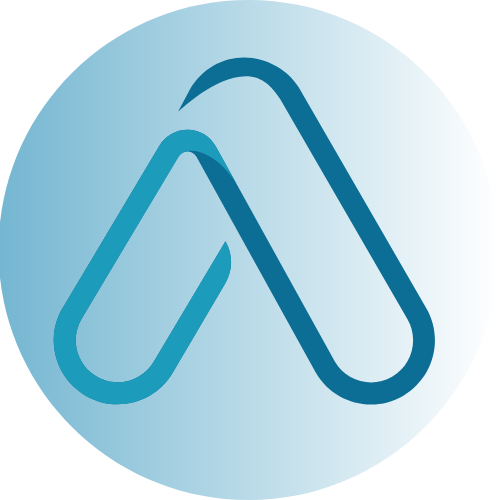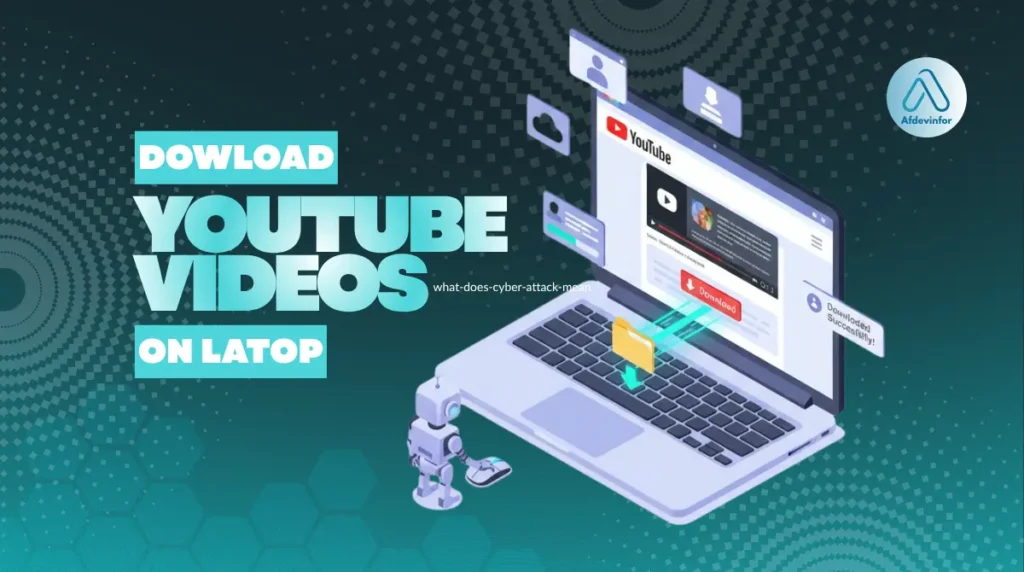Need to watch a lecture on a flight or keep your kids entertained on a road trip? Learning how to download a youtube video on laptop seems simple, but after more than 5 years in tech, I’ve found it’s a minefield of safety, legal, and reliability risks. Many guides just list tools without addressing the core problems, leaving you vulnerable. I’ve been there, and I wrote this guide to fix that.
This guide cuts through the noise to give you clear, safe, and privacy-focused methods for 2025. I’ll walk you through the only official method, compare the best third-party tools, and show you how to protect your data.
1. Understanding the legal and safety risks
Before you even think about which tool to use, it’s crucial to understand the landscape you’re stepping into. I’m not here to lecture, but to empower you with the knowledge to make an informed decision and avoid the common pitfalls that I see trip up so many users.
First, let’s address the big question:
Is it legal to download YouTube videos?
The answer is complicated. YouTube’s Terms of Service (ToS) explicitly state that you are not permitted to download any content unless you see a ‘download’ button or link displayed by YouTube for that content. Downloading copyrighted material without the owner’s permission can constitute copyright infringement.
However, the concept of ‘fair use’ or personal use for things like time-shifting (watching later) exists, though its legal standing can be ambiguous and varies by country. On the safety front, the biggest danger comes from the third-party tools themselves. Many free download websites and applications are loaded with malware, intrusive adware, or trackers that violate your privacy.
| Warning Downloading copyrighted content without permission is against YouTube’s ToS and may be illegal. Always prioritize official methods or download content you have rights to, such as videos under a Creative Commons license or your own uploaded content. |
1.1. Assess region-specific risks by balancing legality, safety, and tool reliability
To give you a clearer picture, I’ve put together a general risk matrix for downloading YouTube videos based on regional enforcement trends. This is not legal advice but a practical guide based on my experience and publicly known data.
| Region | Copyright Enforcement Level | Typical Tool Risks | Recommended Approach |
| North America (USA/Canada) | Strict | High (Malware, Privacy Violations) | Prioritize YouTube Premium. Use reputable, open-source tools like yt-dlp with a VPN for privacy. |
| European Union (EU) | Strict | High (Privacy/GDPR Concerns) | YouTube Premium is the only compliant method. Be extremely cautious with third-party tools due to data laws. |
| Asia-Pacific (Varies) | Moderate to Lax | Very High (Adware, Bundled Software) | Vetting tool safety is critical. Stick to well-known desktop software from official sites. Avoid web-based tools. |
| Other Regions | Lax | High (Malware, Redirects) | Assume most free tools are unsafe. Use a strong antivirus and a VPN. Open-source tools are the safer bet. |
2. Using YouTube premium for safe downloads
If you want the only 100% legal, safe, and officially supported way to download videos, YouTube Premium is the answer. As a subscriber, you can download videos directly within the YouTube ecosystem for offline viewing. Here’s how I do it on my laptop.
Follow these simple steps for a YouTube Premium download:
- Navigate to the YouTube video you want to download while logged into your Premium account.
- Look for the ‘Download’ button located directly beneath the video player, next to the ‘Share’ and ‘Save’ buttons. [Screenshot of the YouTube download button next to a video title]
- Click the ‘Download’ button. You may be prompted to choose the video quality. The higher the quality, the larger the file size.
- Once the download is complete, you can find your video in the ‘Downloads’ section in the left-hand navigation menu of YouTube. [Screenshot showing the ‘Downloads’ section in the YouTube sidebar]
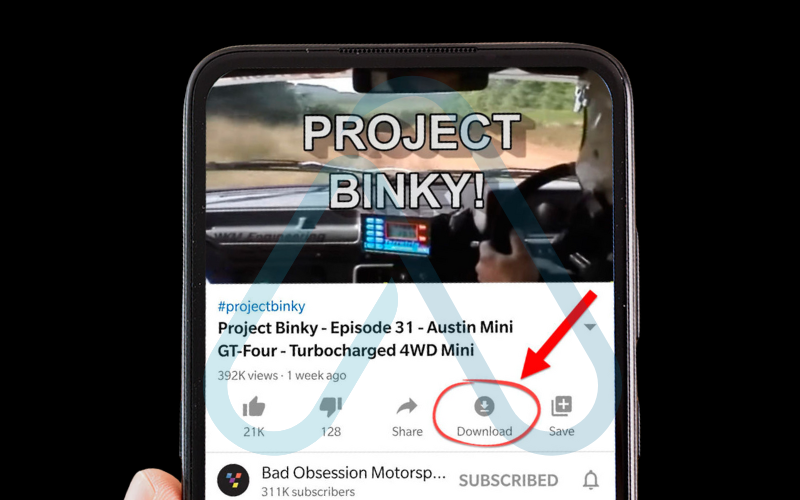
While this method is fantastic, it’s important to know its limitations. Here’s a quick rundown of the pros and cons I’ve noted:
- Pros: 100% legal and safe, supports creators, high-quality downloads, ad-free viewing experience across the platform.
- Cons: Requires a paid subscription, videos are DRM-protected and can only be played within the YouTube app, downloads expire after 30 days if your device doesn’t connect to the internet.
3. Which download tool is right for you?
If you decide to venture beyond YouTube Premium, the sheer number of tools can be overwhelming. To help you find the right path, I’ve broken down the options based on common user types. See which one sounds most like you.
- If you are ‘The Casual User’… you value convenience above all else. You need to download a single video quickly without installing software. You’re willing to accept some risks for a no-fuss solution. Your best starting point: Web-Based Downloaders (Section 4.2), but proceed with extreme caution.
- If you are ‘The Power User’… you need to download entire playlists or channels, demand the highest quality (4K/8K), and want a reliable tool for frequent use. You don’t mind installing software to get more features and control. Your best starting point: Desktop Software (Section 4.1).
- If you are ‘The Privacy Advocate’… you want zero tracking, no ads, and complete control over the download process. You are technically comfortable and prioritize security and open-source solutions over a pretty interface. Your best starting point: Command-Line Tools (Section 4.3).
By identifying your primary need, you can skip the noise and focus on the category of tool that will serve you best, avoiding the quest for a single ‘best free YouTube downloader’ that often leads to unsafe choices.
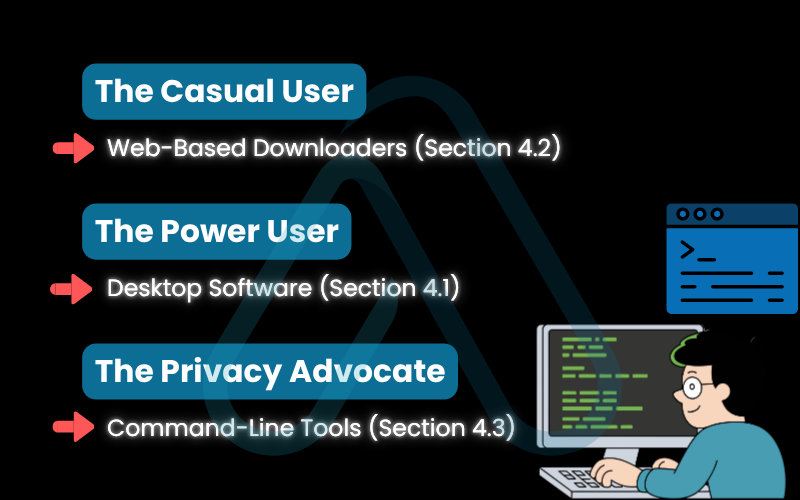
4. Comparison of the top downloaders for 2025
To help you compare your options to download YouTube videos offline, I’ve tested and evaluated leading tools from each category. My ‘Safety/Privacy Score’ is a personal rating (A-F) based on ad intrusiveness, open-source status, data collection policies, and my own hands-on testing.
Here is my breakdown of the top tools I recommend looking into this year:
| Tool | Type | Ease of Use | Safety/Privacy Score | Max Resolution | Playlist Support | Cost |
| 4K Video Downloader | Desktop (GUI) | Very Easy | A- | 8K | ✔ | Free (limited) / Premium |
| yt-dlp | Command-Line (CLI) | Difficult | A+ | 8K+ | ✔ | Free |
| (Hypothetical) SafeConverter.io | Web-Based | Easiest | C | 1080p | ✖ | Free (Ad-supported) |
4.1. Desktop software (GUI tools)
For those who need robust features, I consistently recommend a good desktop application. My go-to for years has been 4K Video Downloader because it strikes a great balance between power and ease of use, making it the safest YouTube downloader for Windows or Mac for most non-technical users.
Here’s how to use it safely:
- Download and Install: Go to the official 4K Video Downloader website. Avoid third-party download sites. Download the installer and run it.
- Copy the YouTube URL: Open your browser, find the YouTube video or playlist you want, and copy its URL from the address bar.
- Paste the Link: Open the 4K Video Downloader application and click the ‘Paste Link’ button in the top-left corner.
- Choose Your Settings: A window will pop up allowing you to choose the format (MP4 is best for compatibility), quality, and save location.
- Download: Click the ‘Download’ button. The application will handle the rest.
| Safety Tip: Always download any software from the official website. During installation, pay close attention and uncheck any boxes that offer to install bundled software, toolbars, or browser extensions. |
4.2. The convenient (but risky) option for Web-based downloaders
Yes, you can download YouTube videos without installing software using web-based tools. These sites are incredibly convenient: you just paste a URL and click download. However, this convenience comes at a significant privacy cost. These ‘free’ services make money by serving aggressive ads and, in some cases, tracking your activity or redirecting you to malicious sites.
If you must use one, be prepared. Here are the typical pros and cons I’ve observed:
- Pros: No installation required, fast for single videos, platform-independent (works on any OS with a browser).
- Cons: High risk of malicious ads and redirects, your download history and IP address may be logged, often limited to lower resolutions (e.g., 720p/1080p), no batch or playlist downloads.
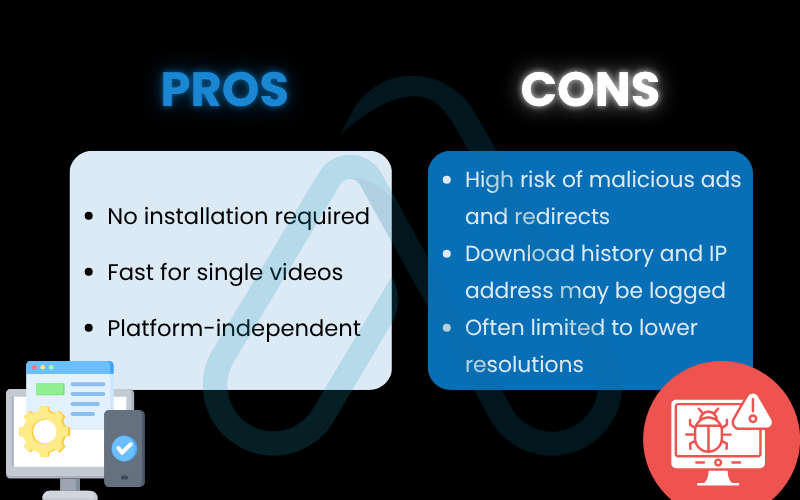
4.3. Master control and privacy with command-line tools (CLI)
For the ultimate in power, privacy, and control, I exclusively use yt-dlp. It’s an open-source project and a fork of the famous (but less frequently updated) youtube-dl. When people discuss yt-dlp vs youtube-dl, the consensus in the tech community is that yt-dlp is the modern, actively maintained choice. It has no ads, no tracking, and gives you granular control over everything. The trade-off is that it has no graphical user interface (GUI) and runs in a terminal or command prompt.
Here are a few basic commands to get you started:
To download a single video in the best available quality:
yt-dlp [VIDEO_URL]To list all available formats for a video (so you can choose):
yt-dlp -F [VIDEO_URL]To download a specific video and audio format (e.g., format code ‘137’ for 1080p video + ‘140’ for best audio):
yt-dlp -f 137+140 [VIDEO_URL]To download just the audio as an MP3:
yt-dlp -x --audio-format mp3 [VIDEO_URL]5. What free downloaders do with your data
As a cybersecurity-focused writer, this is the part I wish more people understood. When you use a free online tool, you are the product. To build a truly safe YouTube downloader habit, you need to be aware of the data you’re giving away. These privacy-focused tools are important for a reason.
Here are the primary risks I’ve identified with most free web-based services:
- IP Logging: Almost every web service logs the IP address of its visitors. This means the service provider knows your general location and can tie your download history directly to you.
- Cookie Tracking and Browser Fingerprinting: These sites use cookies and more advanced techniques to track your activity across their site and potentially across other sites, building a profile on your habits for targeted advertising.
- Adware Bundling: Many desktop installers for ‘free’ downloaders come bundled with unwanted software (adware) that can hijack your browser, slow down your computer, and compromise your security.
- Malicious Redirects: The most dangerous risk is from shady ad networks used by these sites. A single misclick can lead to a ‘drive-by download’ of malware or a phishing page designed to steal your credentials.
To mitigate these risks, I strongly recommend using a reputable VPN to mask your IP address and always choosing open-source, community-vetted tools like yt-dlp whenever possible.
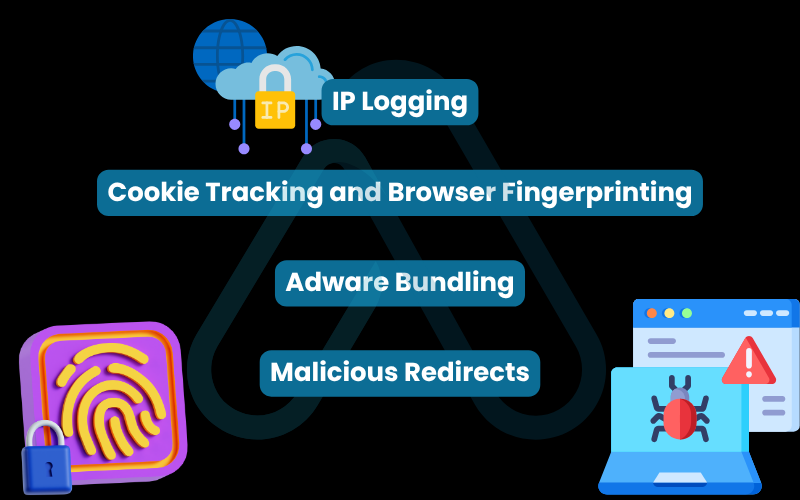
6. Why your downloader stopped working (and how to fix it)
It’s a common and frustrating problem: your trusted downloader suddenly fails with a cryptic error. Trust me, I’ve spent hours on YouTube video download troubleshooting. The primary reason this happens is that YouTube frequently updates its site’s backend code to improve performance and, not coincidentally, break third-party download tools.
When your tool stops working, don’t panic. Here is the checklist I run through:
- Update Your Tool: This is the most common fix. Developers of good tools (especially yt-dlp) release updates very quickly after a YouTube change. Check for a ‘Check for Updates’ button in your app or run the update command for a CLI tool.
- Check the Community/Forums: Visit the tool’s official website, GitHub page, or subreddit. If there’s a widespread issue, other users will be talking about it, and you’ll likely find a status update from the developers.
- Clear Cache: Sometimes, old data can cause problems. Try clearing your downloader’s cache if it has one, or simply restart the application.
- Try a Different Format: Occasionally, YouTube changes how a specific format (like 4K WebM) is delivered. Try downloading a different quality or format (e.g., 1080p MP4) to see if that works.
- Switch Tools Temporarily: If your primary tool is down for a day or two, you may need to use an alternative from a different category. This is why it’s good to be familiar with more than one safe option.
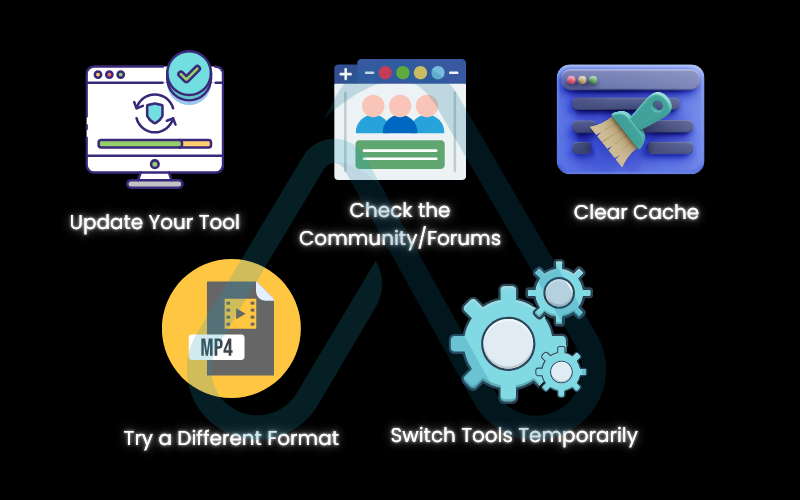
7. FAQs about how to download a youtube video on laptop safely
Here are some quick answers to the questions I get asked most often about downloading YouTube videos.
What is the best format to download a YouTube video in?
MP4 is the best all-around choice because it balances quality, file size, and compatibility. MKV works well for keeping multiple audio or subtitle tracks, while WebM is mainly used for web playback.
Can I download 4K or 8K videos?
Yes, but you’ll need a proper desktop tool. Web-based downloaders usually stop at 1080p. To get 4K or 8K, use apps like 4K Video Downloader or yt-dlp.
How can I download an entire YouTube playlist or channel?
Advanced desktop tools and command-line programs like yt-dlp can do this. Just paste the playlist or channel URL instead of a single video link.
Are YouTube downloader browser extensions safe?
Not really. They often ask for permissions that let them read or change data on any site you visit. It’s safer to use a trusted desktop program instead.
Glossary of key terms
| Abbreviation | Full Term | Meaning |
| CLI | Command-Line Interface | A text-based interface used for running programs, like yt-dlp, by typing commands. |
| DRM | Digital Rights Management | Technology used to control access to copyrighted digital content. YouTube Premium downloads use DRM. |
| GUI | Graphical User Interface | A visual interface with buttons, windows, and icons that allows users to interact with software easily. |
| IP Address | Internet Protocol Address | A unique numerical label assigned to each device connected to a computer network that uses the Internet for communication. |
| Malware | Malicious Software | Software designed to disrupt, damage, or gain unauthorized access to a computer system. |
| Open-Source | Open-Source Software | Software with source code that anyone can inspect, modify, and enhance. It is generally considered more transparent and secure. |
| VPN | Virtual Private Network | A service that encrypts your internet traffic and hides your IP address, enhancing privacy and security online. |
| yt-dlp | (Not an acronym) | A popular, open-source command-line program used to download video and audio from YouTube and hundreds of other sites. |
8. Final thoughts
Navigating the world of YouTube downloaders in 2025 requires a careful balance of convenience, quality, and security. After years of testing and troubleshooting, I’ve learned that there’s no single perfect tool, only the right tool for your specific needs and risk tolerance. My goal was to arm you with the knowledge to make that choice confidently.
Here are my final recommendations, boiled down:
- For Ultimate Safety and Legality: Use YouTube Premium. It’s the only method officially supported by the platform and is guaranteed to be free of malware and legal ambiguity.
- For Power and Features: A well-vetted desktop application like 4K Video Downloader is your best bet. Always download from the official site to avoid bundled adware.
- For Maximum Privacy and Control: If you’re willing to learn, a command-line tool like yt-dlp is unparalleled. It’s the most private, powerful, and versatile option available.
- A Word of Caution: Be extremely skeptical of web-based downloaders. While convenient for one-off downloads, they pose the highest risk to your privacy and security.
I hope this guide has demystified the process and helps you save videos safely. For more in-depth guides to help you master your digital world, explore our Essential Digital Tools categories on Afdevinfo.
